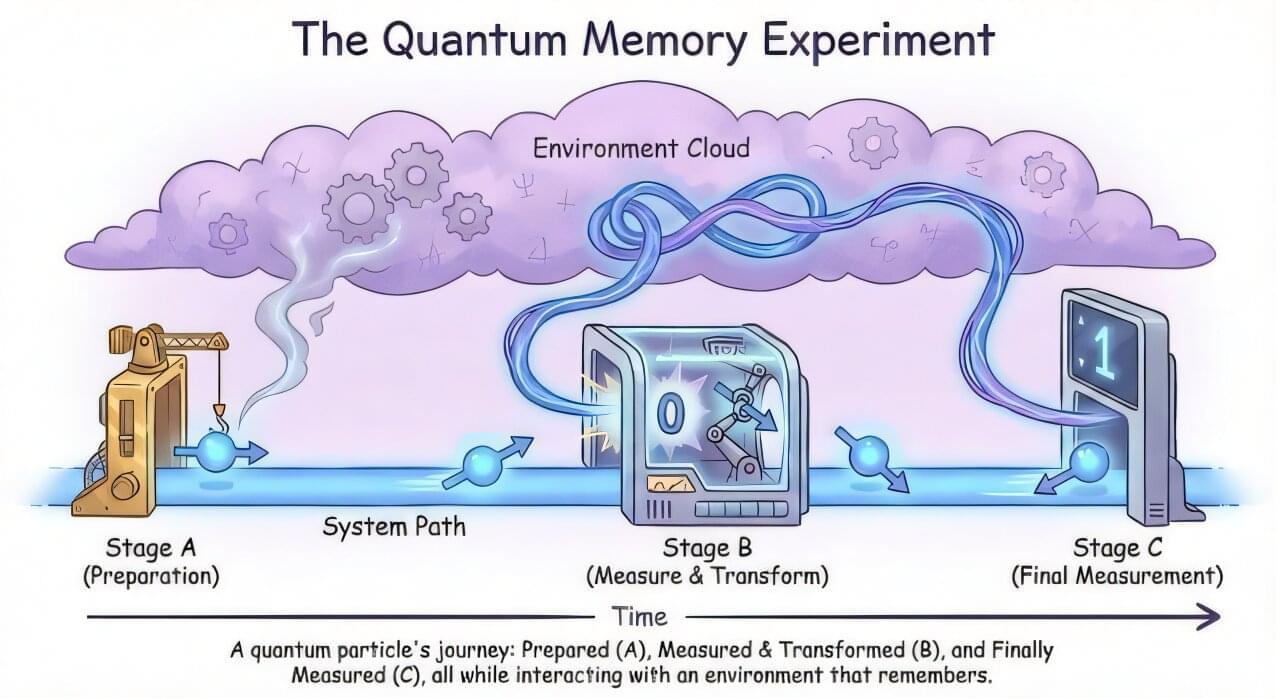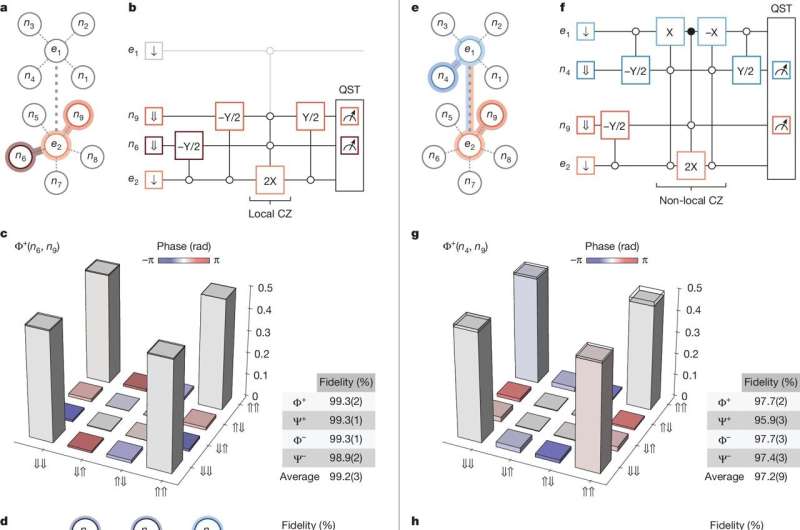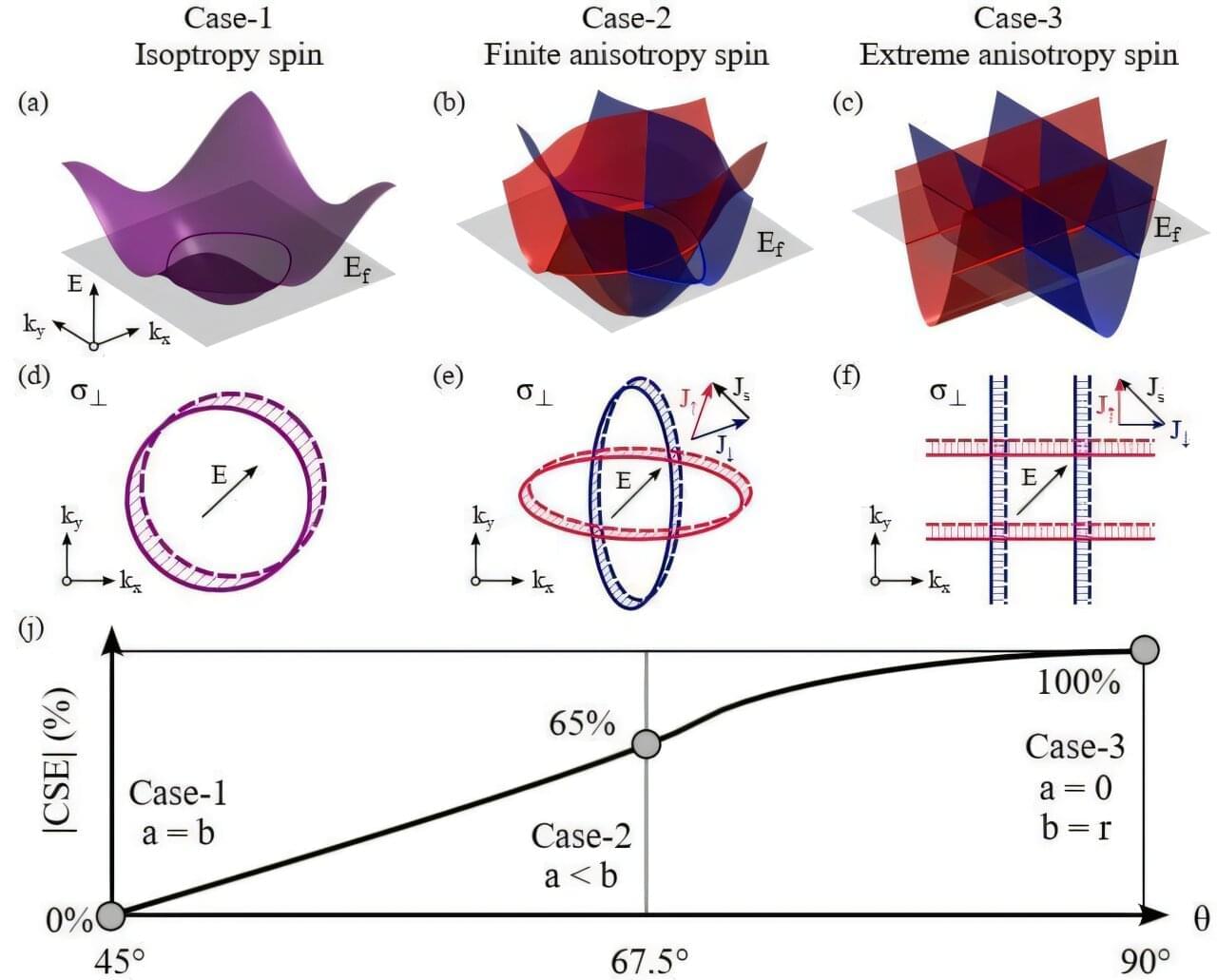Researchers say they have created the world’s first scalable atomic quantum processor that achieves record-breaking 99.99% fidelity.
Category: quantum physics – Page 8

Why quantum computers have memory problems over time
A team of Australian and international scientists has, for the first time, created a full picture of how errors unfold over time inside a quantum computer—a breakthrough that could help make future quantum machines far more reliable.
The researchers, led by Macquarie University’s Dr. Christina Giarmatzi, found that the tiny errors that plague quantum computers don’t just appear randomly. Instead, they can linger, evolve and even link together across different moments in time.
The team has made its experimental data and code openly available, and the full study is published in Quantum.


Scientists crack the atomic code behind single-photon quantum emitters
This achievement removes one of the biggest roadblocks in quantum materials science and brings practical quantum devices much closer to reality.
Quantum emitters work by releasing single photons, individual packets of light, on demand. This ability is critical because quantum technologies rely on absolute control over light and information.
The problem has always been visibility and control. The exact atomic defects responsible for these emitters are incredibly small and difficult to observe. Scientists could either study how they emit light or examine their atomic structure—but not both at the same time.

How to Measure a Tiny Beam Shift
Measuring very small displacements of a laser beam is important in many areas of science and technology, such as in an atomic force microscope. A quantum trick called weak-value amplification (WVA) has previously led to extremely sensitive measurements of beam shifts within interferometers. Now Carlotta Versmold of the Ludwig Maximilian University of Munich and her colleagues have extended such measurements to beam displacements outside of an interferometer [1]. For example, a laser beam reflecting off of a distant window could encode vibrations resulting from conversations inside the building.
In the WVA version applicable to shifts within an interferometer, a light beam is split and routed along two slightly unequal paths that later merge and lead to two output ports—a “bright” port where the beams largely reinforce one another and a “dark” port where they mostly cancel each other out. Any slight displacement of either beam is amplified in the position of the dim spot at the dark port. However, shifts in the beam entering the interferometer lead to offsetting shifts of the internal beams and thus to no measurable signal.
To extend the method to shifts of the incoming beam, Versmold and her colleagues added a so-called Dove prism to one of the beam paths. This type of prism generates an additional reflection, which effectively leads to opposite shifts in the two paths, resulting in an amplified signal at the dark port.

Physicists bring unruly molecules to the quantum party
Scientists have made leaps and bounds in bending atoms to their will, making them into everything from ultraprecise clocks to bits of quantum data. Translating these quantum technologies from obedient atoms to unruly molecules could offer greater possibilities. Molecules can rotate and vibrate. That makes molecules more sensitive to certain changes in the environment, like temperature.
“If you’re sensitive to something, it can be a curse, because you would like to not be sensitive, or it can be a blessing,” said NIST physicist Dietrich Leibfried. “You can use that sensitivity to your advantage.”
But that same sensitivity has made molecules difficult to control. Recently, physicists at the National Institute of Standards and Technology (NIST) achieved new levels of control over molecules. In a study published in Physical Review Letters, they were able to manipulate a calcium hydride molecular ion—made up of one atom of hydrogen and one atom of calcium, with one electron removed to make it a charged molecule—with almost perfect success. And this control opens possibilities for quantum technology, chemical research and exploring new physics.

A simple spin swap reveals exotic anyons
Researchers from the University of Innsbruck, the Collège de France, and the Université Libre de Bruxelles have developed a simple yet powerful method to reveal anyons—exotic quantum particles that are neither bosons nor fermions—in one-dimensional systems. Their paper is published in Physical Review Letters.
In conventional three-dimensional space, particles belong to one of two categories: fermions or bosons. In low-dimensional settings, however, quantum mechanics allows for more exotic behavior. Here, anyons can emerge—quasi-particles whose exchange properties continuously interpolate between those of bosons and fermions, leading to fractional statistics. Detecting and engineering such particles in one dimension has long been a central challenge, typically requiring, as theory proposals suggest, intricate scattering schemes or density-dependent tunneling processes.
The new study by teams led by Hanns-Christoph Nägerl at the University of Innsbruck and Nathan Goldman at the Université Libre de Bruxelles and Collège de France (CNRS) now introduces a remarkably simple yet powerful approach. The researchers propose an effective “swap” model that leverages the spin degree of freedom of ultracold atoms. By assigning a complex phase to the exchange—or “swap”—of two spins, the system naturally acquires the fractional statistical behavior characteristic of anyons.

Silicon atom processor links 11 qubits with more than 99% fidelity
In order to scale quantum computers, more qubits must be added and interconnected. However, prior attempts to do this have resulted in a loss of connection quality, or fidelity. But, a new study published in Nature details the design of a new kind of processor that overcomes this problem. The processor, developed by the company Silicon Quantum Computing, uses silicon—the main material used in classical computers—along with phosphorus atoms to link 11 qubits.
The new design uses precision-placed phosphorus atoms in isotopically purified silicon-28, which are arranged into two multi-nuclear spin registers. One register contains four phosphorus atoms, while the other contains five, and each register shares an electron spin. The two registers are linked by electron exchange interaction, allowing for non-local connectivity across the registers and 11 linked qubits.
Because of the placement of silicon and phosphorus in the periodic table, the design is referred to as the “14|15 platform.” This 11-qubit atom processor in silicon is the largest of its kind to date, marking a major accomplishment for quantum computing.

Scientists build a quantum computer that can repair itself using recycled atoms
Like their conventional counterparts, quantum computers can also break down. They can sometimes lose the atoms they manipulate to function, which can stop calculations dead in their tracks. But scientists at the US-based firm Atom Computing have demonstrated a solution that allows a quantum computer to repair itself while it’s still running.
The team zeroed in on quantum computers that use neutral atoms (atoms with equal numbers of protons and electrons). These individual atoms are the qubits, or the basic building blocks of a quantum computer’s memory. They are held in place by laser beams called optical tweezers, but the setup is not foolproof.
Occasionally, an atom slips out of its trap and disappears. When this happens mid-calculation, the whole process can grind to a halt because the computer can’t function with a missing part.

Flat Fermi surface in altermagnets enables quantum limit spin currents
The key feature of spintronic devices is their ability to use spin currents to transfer momentum, enabling low-energy, high-speed storage and logical signal control. These devices are usually manipulated by electric currents and fields. The charge-to-spin conversion efficiency (CSE) is a key metric for evaluating their performance.
Now, scientists from the Institute of Metal Research (IMR) of the Chinese Academy of Sciences have proposed a new deep correlation between the spin splitting torque (SST) and the Fermi surface geometry, achieving a quantum limit of 100% in a system with a flat Fermi surface. These results were published in Physical Review Letters on December 16.